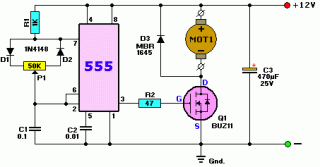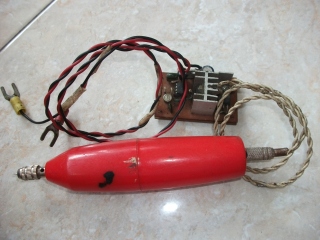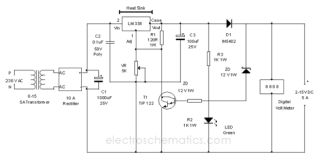While checking for a fast
battery charger circuit
on the web, I came across a couple of designs which were not only
useless but dangerous too. It seemed that the concerned authors had no
idea what a fast charger actually needs to be like.
When we talk about fast charging of a battery we obviously are interested to implement the same with
lead acid batteries, since these are the ones which are used extensively for almost all general applications.
The bottom line with lead acid batteries is that these cannot be charged quickly unless the charger design incorporates an "intelligent" automatic circuitry.
A Li-ion battery can be charged quickly by applying the full dose of the
specified high current to it and then cutting off as soon as it reaches
the full charge level.
However the above operations could mean fatal if done to a
lead acid battery since LA batteries are not designed to accept charge at high current levels continuously.
Therefore these batteries need to be charged at a stepped level, wherein
the discharged battery is initially applied with a high C1 rate,
gradually reduced to C/10 and finally a trickle charge level as the
battery approaches a full charge across its terminals. The course could
include a minimum of 3 to 4 steps for ensuring maximum "comfort" and
safety to battery life.
For implementing a 4 step fast charger circuit, here we employ the versatile LM324 for sensing the different voltage levels.
The following diagram shows how the IC LM324 may be wired up as a 4 step battery voltage monitor circuit.
The IC LM324 is quad opamp IC whose all the four opamps are used for the
intended sequential switching of the output current levels.
The proceedings are very easy to understand. opamps A1 to A2 are
optimized for switching at different voltage levels during the course of
the stepped charging of the connected battery.
All the non-inverting inputs of the opamps are referenced to ground through the zener voltage.
The inverting inputs are tied with the positive supply of the circuit via the corresponding presets.
If we assume the battery to be a 12V battery having a discharge level of
11V, P1 may be set such that the relay just disconnects when the
battery voltage reaches 12V, P2 may be adjusted to release the relay at
12.5V, P3 may be done for te same at 13.5V and finally P4 could be set
for responding at the battery full charge level of 14.3V.
Rx, Ry, Rz have same values and are optimized to provide the battery
with the required amount of current during the various charging voltage
levels.
The value could be fixed such that each inductor allows a current passage rate that may be 1/10th of the battery AH.
It may be determined by using ohms law R = I/V
The values of Rx, alone or Rx, Ry together could be dimensioned a little
differently for allowing relatively more current to the battery during
the initial stages as per individual preferences, and is tweakable.
How the fast charger circuit responds when switched ON
After
connecting the discharged battery across the shown terminals when power is switched ON:
All the opamps inverting inputs experience a correspondingly lower voltage levels than the reference level of the zener voltage.
This prompts all the outputs of the opamps to become high and activates the relays RL/1 to RL/4.
In the above situation the full supply voltage from the input is bypassed to the battery via the N/O contacts of RL1.
The discharged battery now starts charging at a relatively extreme high
current rate and rapidly charges upto a level above the discharged level
until the set voltage at P1 exceeds the zener reference.
The above forces A1 to switch OFF T1/RL1.
The battery is now inhibited from getting the full supply current but
keeps charging with the parallel resistances created by Rx, Ry, Rz via
the corresponding relay contacts.
This makes sure that the battery is charged at the next higher current
level determined by the the three parallel inductor net value
(resistances).
As the battery charges further, A2 shuts down at the next predetermined
voltage level, switching OFF Rx and rendering Ry, Rz only with the
intended charging current to the battery. This makes sure that the amp
level is correspondingly reduced for the battery.
Following the procedures as the battery charges to the next calculated
higher level, A3 switches OFF allowing only Rz to maintain the required
optimal current level for the battery, until it gets fully charged.
When this happens, A4 finally switches OFF making sure that the battery
is now gets completely switched off after attaining the required full
charge at the specified fast rate.
The above method of 4 step charging ensures a rapid charging without
harming the battery internal configuration and makes sure the charge
reaches at least at 95%.
Rx, Ty, Rz may be replaced with equivalent wire wound resistors, however
it would mean some heat dissipation from them compared the inductor
counterparts.
Normally a lead acid battery would need to be charged for about 10 to 14 hours for allowing at least 90% of charge accumulation. With the above fast battery charger circuit the same could be done within 5 hours of time, that's 50% quicker.
Parts List
R1---R4 = 10k
P1---P4 = 10k presets
T1---T4 = BC547
RL/1---RL/4 = SPDT 12V relays 10amp contact rating
D1---D4 = 1N4007
Z1 = 6V, 1/2 watt zener diode
A1---A4 = LM324 IC





























